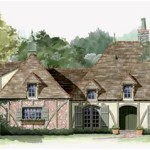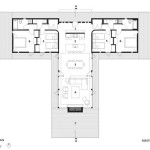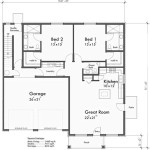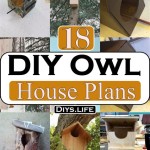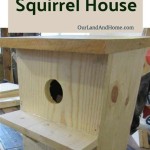A multi-family house plan refers to a design or blueprint that outlines the layout and structure of a building intended to accommodate multiple separate dwelling units under one roof. These units can be apartments, townhouses, or other types of living spaces that share common walls and potentially amenities.
Multi-family house plans are commonly employed in various settings, such as urban areas where land is scarce, suburban neighborhoods seeking higher density housing options, and even rural developments aiming to create affordable housing solutions. They offer advantages like efficient use of space, shared maintenance costs, and potential income generation for owners who rent out units.
In the following sections, we will delve deeper into the key considerations, design principles, and practical applications of multi-family house plans, exploring their benefits and challenges to provide a comprehensive understanding of this popular housing concept.
When considering a multi-family house plan, several key points merit attention:
- Space planning and unit layout
- Shared amenities and common areas
- Privacy and sound insulation
- Energy efficiency and sustainability
- Parking and accessibility
- Maintenance and shared responsibilities
- Legal considerations and zoning regulations
- Financing and investment potential
- Community design and aesthetic appeal
Understanding these aspects is crucial for creating functional, livable, and profitable multi-family housing developments.
Space planning and unit layout
Space planning and unit layout are fundamental aspects of multi-family house plans. They involve optimizing the use of available space to create functional, comfortable, and aesthetically pleasing living units within a shared structure.
- Maximizing space utilization
Multi-family house plans often need to accommodate multiple units within a limited footprint. Efficient space planning is crucial to ensure that each unit has adequate living space, storage, and natural light while minimizing wasted areas.
- Creating functional layouts
The layout of each unit should flow seamlessly, allowing for easy movement and daily activities. Kitchens should be designed for efficiency, bathrooms for privacy, and living spaces for both comfort and entertainment.
- Considering privacy and noise control
Units in multi-family houses share walls and may be in close proximity to each other. Proper planning is essential to minimize noise transmission and ensure privacy for each unit.
- Optimizing natural light and ventilation
Natural light and ventilation contribute to the overall well-being of occupants. Multi-family house plans should incorporate windows, balconies, or courtyards to maximize natural light and promote air circulation.
Thoughtful space planning and unit layout are essential for creating multi-family housing that meets the needs of residents, enhances their quality of life, and maximizes the value of the property.
Shared amenities and common areas
In multi-family house plans, shared amenities and common areas play a crucial role in enhancing the livability and overall experience for residents. These spaces provide opportunities for socialization, recreation, and convenience, fostering a sense of community and adding value to the development.
- Outdoor spaces
Outdoor spaces, such as courtyards, balconies, or rooftop terraces, offer residents a place to relax, socialize, or simply enjoy the outdoors. These areas can be designed with seating, grilling stations, or play equipment to cater to different needs.
- Community rooms
Community rooms are shared indoor spaces that can be used for various activities, such as meetings, parties, or fitness classes. They provide a place for residents to gather, socialize, and build relationships within the community.
- Laundry facilities
Shared laundry facilities are a convenient amenity that can save residents time and money. These facilities should be well-maintained and equipped with adequate washers and dryers to meet the needs of all residents.
- Parking
Adequate parking is essential for multi-family developments. The plan should include designated parking spaces for residents and visitors, considering factors such as the number of units, vehicle ownership rates, and accessibility needs.
Shared amenities and common areas in multi-family house plans contribute to the overall quality of life for residents. By providing spaces for socialization, recreation, and convenience, these developments foster a sense of community and enhance the livability of the property.
Privacy and sound insulation
Privacy and sound insulation are crucial considerations in multi-family house plans. Residents should feel a sense of privacy within their units, free from disturbances or intrusions from neighboring units. Effective sound insulation measures are essential to minimize noise transmission between units, ensuring a peaceful and comfortable living environment.
To ensure privacy, multi-family house plans should incorporate design elements such as separate entrances for each unit, soundproof walls and ceilings, and staggered unit layouts to reduce direct noise transmission. Additionally, windows and balconies should be placed thoughtfully to minimize overlooking and maintain visual privacy.
Sound insulation is achieved through the use of soundproofing materials, such as fiberglass insulation, acoustic panels, and resilient channels. These materials absorb and dampen sound waves, reducing their transmission through walls, floors, and ceilings. Proper sealing around doors, windows, and pipes is also crucial to prevent sound leakage.
In addition to physical barriers, sound insulation can be enhanced through design strategies. For example, separating noisy areas, such as laundry rooms or mechanical equipment, from quieter areas like bedrooms, can minimize disturbance. Carpeting and upholstered furniture can also help absorb sound within units, creating a more tranquil environment.
By prioritizing privacy and sound insulation in multi-family house plans, architects and developers can create living spaces that offer a sense of peace, tranquility, and seclusion for residents, fostering a comfortable and harmonious living environment.
Energy efficiency and sustainability
In today’s environmentally conscious climate, energy efficiency and sustainability are paramount considerations in multi-family house plans. Implementing sustainable design strategies can significantly reduce operating costs, minimize environmental impact, and enhance the overall well-being of residents.
- Energy-efficient building envelope
The building envelope, including walls, roof, windows, and doors, plays a crucial role in energy efficiency. Insulation, air sealing, and high-performance windows help minimize heat loss and gain, reducing the need for heating and cooling systems.
- Efficient HVAC systems
Heating, ventilation, and air conditioning (HVAC) systems account for a significant portion of energy consumption in multi-family buildings. Energy-efficient HVAC systems, such as geothermal heat pumps or variable refrigerant flow (VRF) systems, can substantially reduce energy usage while maintaining occupant comfort.
- Renewable energy sources
Incorporating renewable energy sources, such as solar panels or wind turbines, can further enhance the sustainability of multi-family house plans. These systems can generate clean electricity, offsetting the building’s reliance on fossil fuels and reducing greenhouse gas emissions.
- Water conservation measures
Water conservation is another important aspect of sustainability. Low-flow fixtures, efficient irrigation systems, and rainwater harvesting can help reduce water consumption and promote responsible resource management.
By adopting these energy-efficient and sustainable design strategies, multi-family house plans can minimize their environmental footprint, reduce operating costs, and create healthier and more comfortable living environments for residents.
Parking and accessibility
Parking and accessibility are essential considerations in multi-family house plans, ensuring convenient and equitable access for all residents and visitors.
- Adequate parking spaces
Multi-family house plans should provide sufficient parking spaces to meet the needs of residents and guests. The number of spaces required may vary based on factors such as the number of units, vehicle ownership rates, and local regulations. Designated parking areas should be clearly marked and easily accessible.
- Accessible parking and entrances
Accessible parking spaces and entrances are essential for individuals with disabilities. These spaces should be located near building entrances and ramps or elevators should be provided to ensure accessibility to all units and common areas. Universal design principles should be incorporated throughout the plan to create an inclusive and barrier-free environment.
- Walkability and public transportation
Encouraging walkability and access to public transportation can reduce reliance on car ownership and promote sustainable living. Multi-family house plans should be located near public transportation routes, sidewalks, and bike paths. Pedestrian-friendly features, such as well-lit walkways and crosswalks, enhance the safety and convenience for residents.
- Electric vehicle charging stations
With the growing adoption of electric vehicles, multi-family house plans should consider incorporating electric vehicle charging stations. These stations can be installed in parking areas or garages, providing convenient charging options for residents who own electric vehicles.
By prioritizing parking and accessibility in multi-family house plans, developers can create inclusive and sustainable communities that meet the diverse needs of residents and promote a high quality of life.
Maintenance and shared responsibilities
Maintenance and shared responsibilities are crucial aspects of multi-family house plans, ensuring the upkeep and smooth functioning of the property. Residents and property managers share the responsibility of maintaining common areas, systems, and amenities to preserve the value and quality of the development.
Common area maintenance
Common areas, such as hallways, lobbies, courtyards, and parking lots, are shared by all residents. Regular cleaning, repairs, and maintenance are necessary to keep these areas safe, clean, and aesthetically pleasing. Responsibilities may include sweeping, mopping, snow removal, landscaping, and lighting maintenance.
Systems maintenance
Multi-family house plans often share mechanical and electrical systems, such as HVAC, plumbing, and electrical wiring. Regular maintenance and inspections are essential to ensure these systems operate efficiently and safely. Responsibilities may include filter changes, equipment checks, and emergency repairs.
Amenity maintenance
Shared amenities, such as laundry facilities, community rooms, and fitness centers, require regular maintenance to remain functional and inviting. Responsibilities may include cleaning, equipment upkeep, and repairs. Clear guidelines should be established regarding amenity usage and maintenance schedules to avoid disputes.
Establishing clear rules and responsibilities for maintenance and shared spaces is crucial. This can be achieved through homeowners’ associations (HOAs) or property management companies. Regular communication and collaboration among residents and management ensure that maintenance tasks are carried out promptly and effectively, preserving the value and livability of the multi-family property.
Legal considerations and zoning regulations
Legal considerations and zoning regulations play a significant role in multi-family house plans. Before embarking on a development project, it is crucial to understand the legal framework and zoning requirements that apply to the property.
Zoning regulations
Zoning regulations are established by local governments to control land use and development within their jurisdictions. These regulations determine the types of buildings and uses that are permitted in specific areas. Multi-family house plans must comply with the zoning regulations of the area where the development is planned.
Building codes
Building codes are another set of regulations that govern the construction and safety of buildings. These codes ensure that buildings are structurally sound, meet minimum safety standards, and are accessible to individuals with disabilities. Multi-family house plans must adhere to the building codes in force in the relevant jurisdiction.
Environmental regulations
Environmental regulations aim to protect the environment and mitigate the impact of development on natural resources. These regulations may impose restrictions on land use, construction methods, and waste disposal. Multi-family house plans must comply with environmental regulations to minimize their ecological footprint and preserve the surrounding environment.
Understanding and complying with legal considerations and zoning regulations is essential to ensure that multi-family house plans are developed in a manner that is legally compliant, safe, and environmentally responsible.
Financing and investment potential
Multi-family house plans offer various financing and investment opportunities. Investors and developers can explore different financing options and strategies to fund their projects and maximize their returns.
- Conventional loans
Conventional loans are a common financing option for multi-family house plans. These loans are typically offered by banks and credit unions and require a down payment of at least 20%. Conventional loans offer competitive interest rates and fixed monthly payments, providing stability and predictability for investors.
- Government-backed loans
Government-backed loans, such as FHA and VA loans, are insured by the federal government and offer more flexible financing options. These loans typically have lower down payment requirements and more lenient credit score requirements, making them accessible to a wider range of borrowers.
- Private lending
Private lending is another option for financing multi-family house plans. Private lenders are typically individuals or companies that lend money outside of traditional banking institutions. Private loans may offer more flexible terms and conditions, but they often come with higher interest rates and fees.
- Equity investments
Investors can also consider equity investments in multi-family house plans. This involves purchasing a share of ownership in the property, sharing in the profits and losses generated by the investment. Equity investments offer the potential for higher returns but also carry more risk.
The financing and investment potential of multi-family house plans make them an attractive option for investors seeking stable income streams and long-term appreciation. By carefully assessing financing options and investment strategies, investors can optimize their returns and build a successful portfolio.
Community design and aesthetic appeal
Community design and aesthetic appeal play a significant role in enhancing the overall livability and desirability of multi-family house plans. Well-designed communities foster a sense of place, promote social interaction, and create a visually pleasing environment for residents.
Cohesive architectural style
Maintaining a cohesive architectural style throughout the development creates a sense of unity and harmony. This can be achieved by using similar building materials, colors, and design elements across the units. Consistency in architectural style enhances the overall aesthetic appeal and contributes to the community’s identity.
Landscaping and outdoor spaces
Landscaping and outdoor spaces are essential for creating a welcoming and inviting community. Thoughtfully designed green spaces, walking paths, and gathering areas provide opportunities for recreation, relaxation, and social interaction. Incorporating native plants and sustainable landscaping practices promotes environmental responsibility and enhances the overall ambiance.
Community amenities
Community amenities, such as swimming pools, fitness centers, and clubhouses, contribute to the overall appeal and livability of multi-family house plans. These amenities provide residents with opportunities for recreation, socialization, and leisure activities. By creating a sense of community and shared ownership, these amenities foster a positive and vibrant living environment.
By prioritizing community design and aesthetic appeal, multi-family house plans can create cohesive, visually pleasing, and socially engaging living environments that enhance the quality of life for residents and contribute to the overall success of the development.










Related Posts

